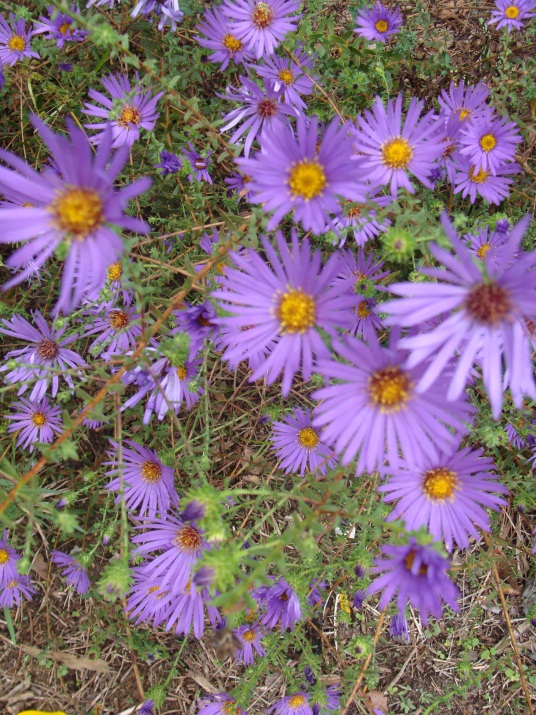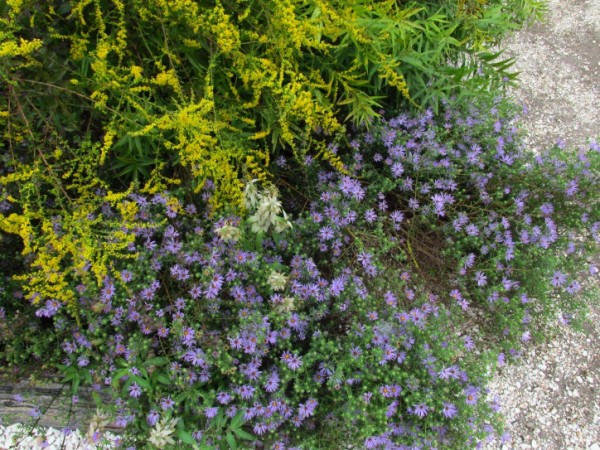
White Wood Aster
Asters are one of the true stalwarts of the autumn garden.
Generally known as Starworts to colonial botanists and plant collector’s there are now 36 species and several varieties of this versatile genus recognized in the state of Virginia.

Large-flowered Aster
From the colonial period to relatively recently the entire genus was classed as Aster but recently the genus has been broken up between Symphyotrichum and Eurybia.
As an example, two species described by the eminent Virginian botanist, John Clayton, Clerk of Courts for Gloucester County and author of “Flora Virginica,” first published in Leiden, Holland, in 1739, are the White Wood Aster which Clayton typified as Aster folus cordatus and is now known as Eurybia divaricata and the Large-flowered Aster classed by Clayton as Aster caule corymbosa and now known as Symphyotrichum grandiflorum.
The White Wood Aster is one of the few members of the genus that thrives in shady situations and the bright white flowers truly justify the colonial name of Starwort.

Aromatic Aster
The Large-flowered aster, on the other hand, demands a full sun situation and seems to prosper best in a sandy soil. On the herbarium sheet Clayton submitted to the Dutch botanist, Gronovius he wrote, simply, “A very beautiful Starwort.” Seldom seen in the modern garden this late blooming aster is worthy of the gardener’s attention.
A personal favorite of mine is the Aromatic Aster, Symphyotricum oblongifolium. An infrequent denizen of the Virginia Mountains, it was not described until 1818 but its vigorous, sprawling habit and its very late and lengthy bloom period make it a valuable addition to the modern herbaceous border.

Leave a Reply